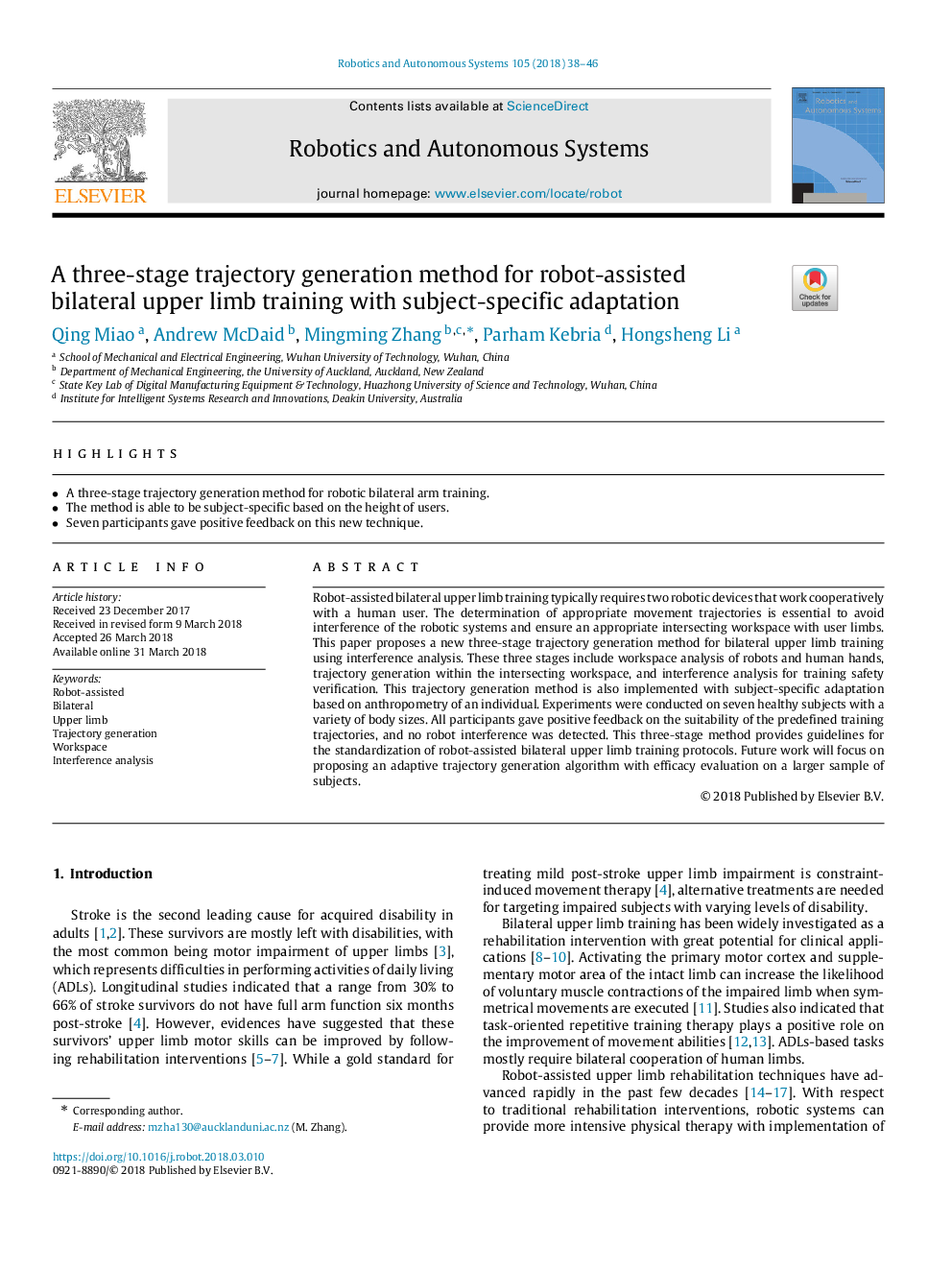| Article ID | Journal | Published Year | Pages | File Type |
|---|---|---|---|---|
| 6867106 | Robotics and Autonomous Systems | 2018 | 9 Pages |
Abstract
Robot-assisted bilateral upper limb training typically requires two robotic devices that work cooperatively with a human user. The determination of appropriate movement trajectories is essential to avoid interference of the robotic systems and ensure an appropriate intersecting workspace with user limbs. This paper proposes a new three-stage trajectory generation method for bilateral upper limb training using interference analysis. These three stages include workspace analysis of robots and human hands, trajectory generation within the intersecting workspace, and interference analysis for training safety verification. This trajectory generation method is also implemented with subject-specific adaptation based on anthropometry of an individual. Experiments were conducted on seven healthy subjects with a variety of body sizes. All participants gave positive feedback on the suitability of the predefined training trajectories, and no robot interference was detected. This three-stage method provides guidelines for the standardization of robot-assisted bilateral upper limb training protocols. Future work will focus on proposing an adaptive trajectory generation algorithm with efficacy evaluation on a larger sample of subjects.
Related Topics
Physical Sciences and Engineering
Computer Science
Artificial Intelligence
Authors
Qing Miao, Andrew McDaid, Mingming Zhang, Parham Kebria, Hongsheng Li,
